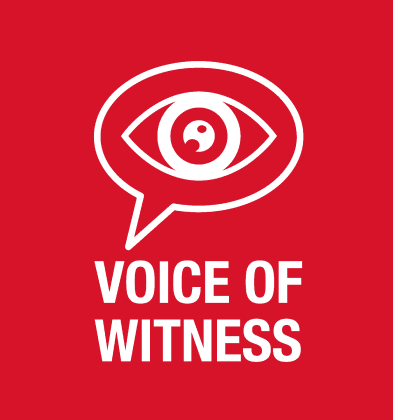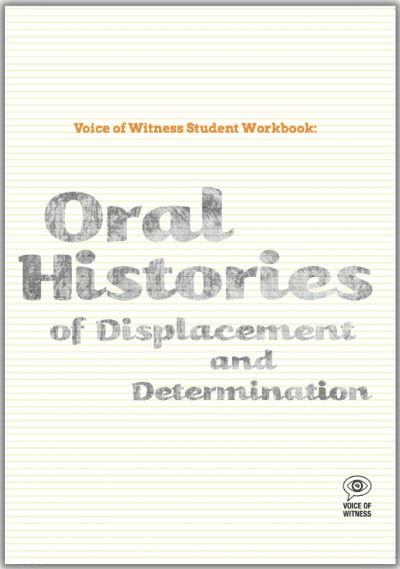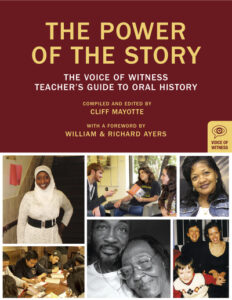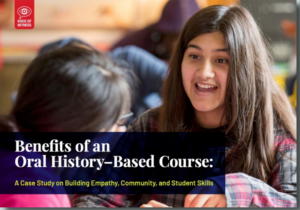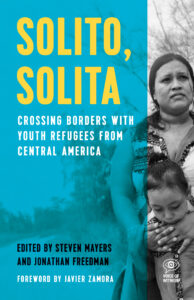The Voice of Witness Student Workbook: Oral Histories of Displacement and Determination highlights two narratives from the Voice of Witness book series in an immersive, accessible student-centered format. Hear directly from Soledad, who crossed borders as a young teenager to pursue an education; and Mike, who experienced incarceration and immigration detention while trying to care for family. Themes of identity and community, migration and displacement, systems of power and oppression, and action and resistance can be found in their words.
The VOW Student Workbook is available for purchase. Reflection activities are included within the pages of the workbook, and a free lesson plan guide is available for download via the form on this page.
The Voice of Witness Student Workbook contains excerpts from longer narratives originally published in our book series.
- Soledad’s story comes from Solito, Solita: Crossing Borders with Youth Refugees from Central America
- Mike’s story comes from Six by Ten: Stories from Solitary
For class sets and larger orders of the VOW Student Workbook, please email edu@voiceofwitness.org for more information.
Voice of Witness Student Workbook: Additional Lessons
Six additional lessons are available as a free download, providing learning extension opportunities for classrooms using our Voice of Witness Student Workbook. As a supplement to the activities in the workbook, these lessons will help your class explore the following questions:
- How do oral histories act as counternarratives to the incomplete or harmful stories we may hear about particular groups of people?
- What are the personal and larger impacts of allowing people to tell their own stories?
- How can I create a meaningful story about myself using the oral history method?
Time Needed: Each of the 6 lesson plans included are intended for 60-minute periods. They can be used as standalone lessons or as a sequence.
Objectives:
- Students will be able to explain the power of storytelling as a tool for countering dominant narratives
- Students will be able to identify stereotypes and analyze the effect of interpersonal and internalized stereotyping
- Students will be able to craft generative questions that deepen their understanding of a text or an issue
Download the Lesson Plans
* Required fields
I’m in love with this oral history workbook for students. The book is beautifully designed and contains excerpts from longer oral histories with youth who share their lived experiences of migration, displacement, and belonging. The book includes prompts and space for writing and reflection, plus it comes with additional lessons you can download for free on the Voice of Witness website. Don’t sleep on this beautiful tool for use in the classroom! I have recommended it at least 10 times this week to various folks and organizations.
Fanny Julissa García
oral historian and educator
